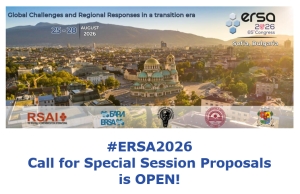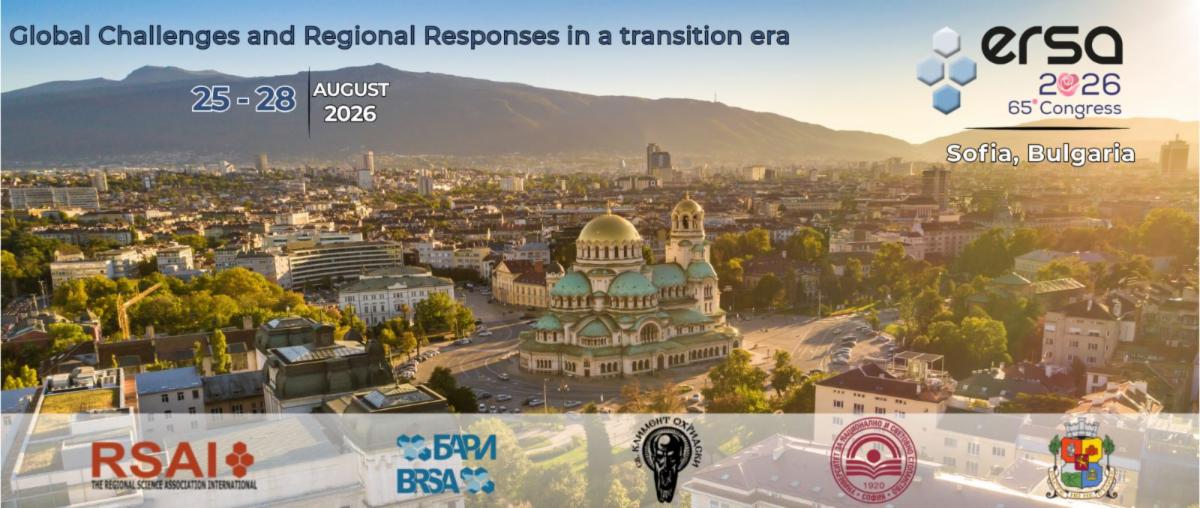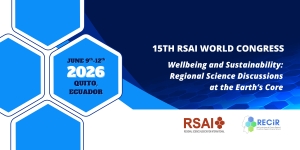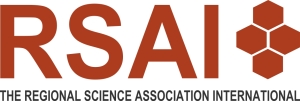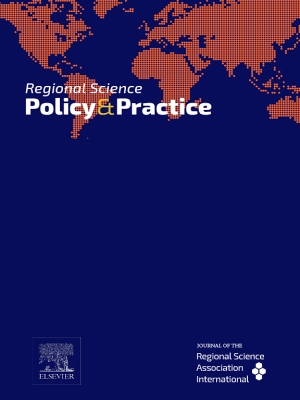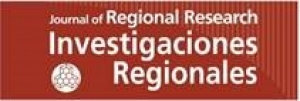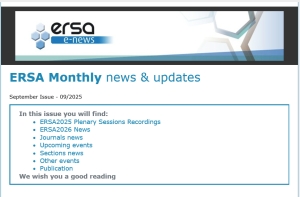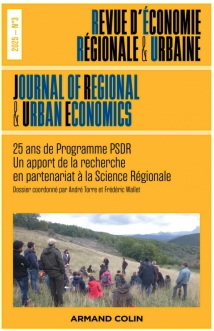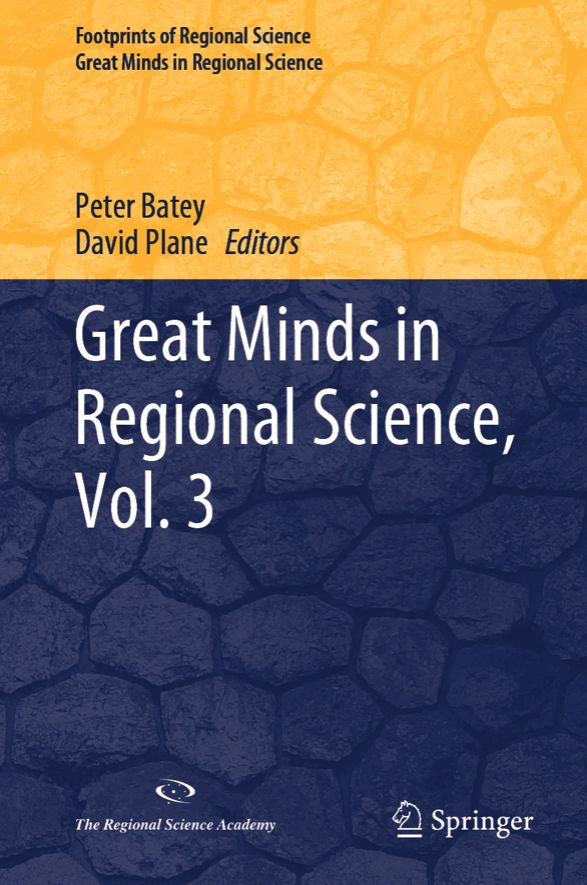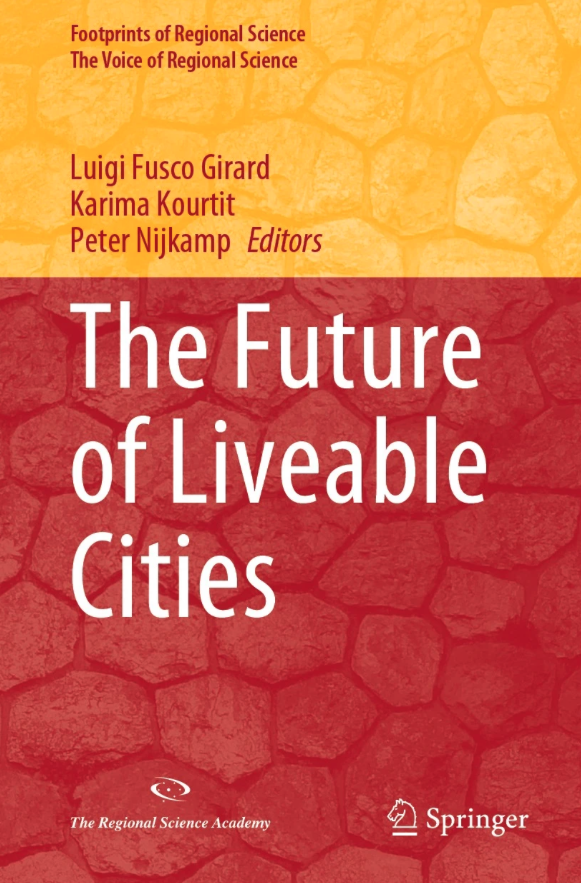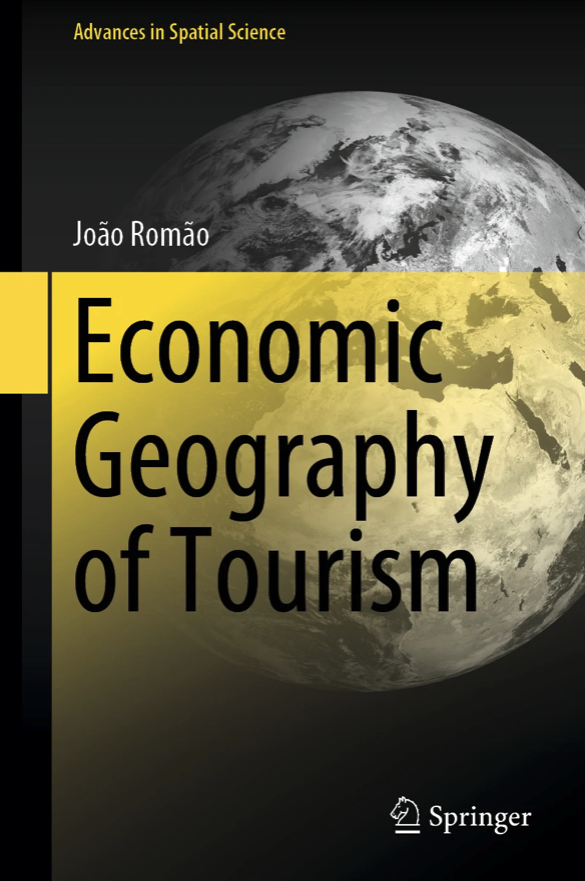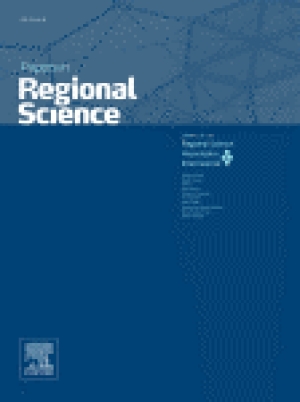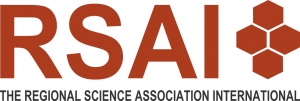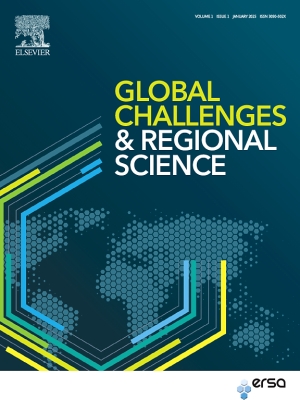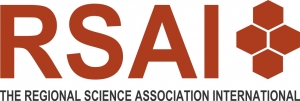Papers in Regional Science
Elisabete Martins
#ERSA2026 Call for Special Session Proposals is OPEN
|
Save the Date: 2026 RSAI Congress in Quito, Ecuador!
|
|
Call for Applications | Peter Nijkamp Award - Deadline: November 30th 2025
Dear RSAI members
Maybe you are not aware of this, but as member of your Regional Science Association, you are immediately a member of the RSAI, which is the Regional Science Association International. (https://regionalscience.org/index.php)
RSAI has one specific Award for researchers from and based in "developing countries", as defined by the World Bank, which is called the Peter Nijkamp RSAI Research Encouragement Award for a Mid-Career Scholar from a Developing Country.
(please visit https://regionalscience.org/index.php/awards/peter-nijkamp-research-award.html)
DEADLINE to RECEIVE APPLICATIONS: November 30th 2025
I cordially invite you to learn about this award and, if fitting the criteria, to consider yourself as a potential candidate (now or some other time in the near future).
Best regards
Dr Ana Viñuela
RSAI Executive Director
Associate Professor, Applied Economics Department
REGIOlab, University of Oviedo, Spain
European Project EXIT (https://www.exit-project.eu/)
New Issue: Regional Science Policy & Practice | Volume 17, Issue 10, October 2025
|
|
Articles
Book Reviews
Editorial of the Special Issue on Regional disparities, social welfare and economic development
|
New Issue 63 of Investigaciones Regionales - Journal of Regional Research
Investigaciones Regionales - Journal of Regional Research has published the 63rd Issue, the third volume corresponding to 2025.
Below you will find the summaries of the papers published in this volume, which can be accessed at https://investigacionesregionales.org/en/revista/well-being-and-quality-of-life-in-latin-american-and-caribbean-cities-progress-and-challenges/
We invite authors to submit papers at https://investigacionesregionales.org/en/envio-de-articulos/submission-of-papers-and-others-contributions/
Issue 63
Special Issue 2025 Well-being and quality of life in Latin American and Caribbean cities: progress and challenges
Editorial
Juan Pablo Díaz-Sánchez, Cintya Lanchimba, Moisés Obaco
Well-being and quality of life in Latin American and Caribbean cities: Progress and challenges
This article presents a special issue of research papers devoted to the study of well-being and quality of life, considering both progress and challenges, in Latin American and Caribbean cities.
Keywords: Well-being; quality of life; Latin America; Caribbean
Articles
Grace Carolina Guevara-Rosero, Alexander Sarango-Iturralde, Andrés García-Suaza
Regional disparities in amenities and the life satisfaction of internal migrants
While migrants pursue better incomes, they might be driven by differences in amenities between the place of origin and destination. This study aims to determine the effect of differences in health, educational amenities, and the operational capacity between the place of origin and destination on the life satisfaction of internal migrants. To do so, a generalized ordered logit model is estimated using data from the Survey of Employment, Unemployment and Underemployment of Ecuador for the editions from 2015 to 2017. Our results show that income and amenities are not competing reasons for life satisfaction, they go hand in hand. Differences in health and educational amenities, as well as variations in the operational capacity of local governments between the places of origin and destination, have an influence on the life satisfaction of internal migrants. These effects vary depending on the age of the migrant, the size of the city of origin and destination, the reason for migration, and the duration of residence.
Keywords: Migration; life satisfaction; regional amenities
Moisés Obaco, Janu Pablo Díaz-Sánchez, Cintya Lanchimba
Urban primacy and slum prevalence in Latin American and Caribbean countries in the 1990-2020 period
Slums are a global concern due to their impact on urban health and urban planning. Although Latin America and the Caribbean is one of the most urbanized developing regions, slums are still a significant concern. However, most studies have concentrated on a single city, using a sample of Latin American and Caribbean (LAC) countries or treating the region as one unit to analyze income inequality and urban primacy. Here, we present an analysis of the relationship between slums and urban primacy for LAC countries for the 1990–2020 period, controlling for GDP per capita and public spending on housing. In addition, we model the relationship between slums and demographic variables such as the fertility rate, migration rate, and urbanization. The analysis is based on panel data from the World Bank and The Economic Commission for Latin America and the Caribbean (ECLAC). During the period of study, a clear positive relationship is evident between urban primacy in the largest city and the slum rate in each LAC country. However, a high level of heterogeneity is observed in this relationship and our model explains the variation in the slum rate within countries better than the variation between countries.
Keywords: Slums; panel data; Latin America; urban primacy; urbanization
Edith Marcial Ramírez, Roberto Iván Fuentes Contreras, Karina Isabel Salinas Solís
Housing and Implications for Spatial Inequality: Tijuana, Mexico, 2015-2021
Urban growth has led to the unforeseen development of peripheral urbanization. The case of the city of Tijuana represents, in a peculiar way, the concern about the acquisition and investment in housing. The rugged topography has caused excessive costs of urbanization and the introduction of services that have limited urban development. The objective of this research is to describe the urban environment based on its resources and housing location, as well as to demonstrate its implications on urban spatial inequality. Through a hedonic price model with data from the Sistema Nacional de Información e Indicadores de Vivienda (SNIIV) from 2015 to 2021. Among the main findings is that the price per square meter of new homes purchased by national residents rises as one moves to the outskirts of the city. In addition, the highest and lowest income deciles are living in peripheral areas.
Keywords: Housing; hedonic model; residential location; periphery
Clara María Karis, María Laura Zulaica
Latin American cities show accelerated processes of expanding growth with direct consequences on the quality of life of their inhabitants. In this context, the article analyzes the uses of public green spaces and the preferences of the population in an intermediate Argentine city and its periurban area, based on data from a survey conducted among visitors of these spaces. The results indicate that the evaluated aspects are associated with the natural and sociocultural attributes of these spaces and the characteristics of the respondents, highlighting the interaction and differences between objective and subjective variables of quality of life, especially in the urban-rural gradient.
Keywords: Green infrastructure; survey; cultural ecosystem services; case study; periurban area
Roberto Mauricio Sánchez-Torres
Multidimensional poverty in the Colombian pacific: identification, measurement and recent trends
The Pacific is the region of Colombia with the greatest economic lag and the lowest living standards of its population. The objective of this study is to investigate poverty in the Colombian Pacific, taking as a reference the multidimensional approach, applying different identification methodologies and aggregation indicators. The main result is that despite the reduction in poverty between 2010 and 2018, it has not been systematic and has presented much more moderate levels than the situation in the rest of the country; in particular, the region has great deficiencies in education levels and access to health.
Keywords: Colombia; Colombian Pacific region; multidimensional poverty; quality of life; welfare economics
Manuel Tiberio Flórez Calderón, Tito Morales Pinzón, Jorge Luis Ceballos Liévano
Vulnerability of Nature Based Tourism to Climate Change in Risaralda, Colombia
The study presents an approach to assess the vulnerability of nature-based tourism in Risaralda, Colombia, to climate change. An environmental reference model is adapted to the tourism sector. The results reveal high vulnerability at the municipal level, conservation areas, ecosystems and tourism supply, especially in high mountain ecosystems. This underlines the importance of adaptive tourism management and measures to reduce vulnerability, such as avoiding concentration of tourism supply, since some of the most vulnerable tourism destinations are paradoxically the most competitive in terms of sustainability. This approach is applicable to other tourism destinations.
Keywords: Vulnerability; tourism; climate change; ecosystems; Risaralda
Mercy Orellana, Joselin Segovia, Rodrigo García Arancibia
Returns to education in Ecuador: The role of family social capital and territorial differences
In this study we aim at estimating the economic return to education with a territorial perspective. Furthermore, we aim at identifying the effect of the family’s social capital, proxied by language of parents, on the economic returns to education. Results show that education provides different returns to individuals that differ by their family backgrounds, with a significant disadvantage on children whose parents speak an indigenous language. We observe that the territory can contribute to these disparities by up to 7%.
Keywords: Social capital; language; education; economic returns; territory
Paula Herrera Idárraga, Helena María Hernández, Martha Susana Jaimes
The Role of Urban Care Sector in Women’s Employment and Gender Segregation in Colombian Regions
The provision of care services can reduce gender labor gaps. As care-related economic activities are highly feminized, strengthening care services can increase women’s share of total employment. Care services can also reduce the unpaid care burden and promote women’s employment in other sectors, which could change sectoral gender segregation. We explore these relationships for Colombia through a regional urban analysis. We classify cities into three regions using their level of competitiveness as a broad measure of labor market dynamics. Using a fixed effects model, our results show that an increase in the importance of the care sector boosts women’s labor force participation and sectoral segregation; however, we emphasize the importance of urban and regional contexts in determining the role of care provision on gender equality.
Keywords: Care provision; segregation; employment
ERSA Monthly E-news - September 2025
|
New Issue: Papers in Regional Science | Volume 104, Issue 5, October 2025
Call for candidatures for new RSAI president
Dear Members of the Regional Science Association International,
according to the RSAI Constitution, each first year of term of the RSAI President, the Association faces the pleasant task of electing the Incoming President, who will in 2026 take on the position of President Elect, and work along with Prof. Hiroyuki Shibusawsa, current RSAI President, to gradually move on to the position of President in 2027. Here is an excerpt of the rules of the Association for managing this important step:
Nomination committee. The RSAI Council has appointed a dedicated nomination committee, that following the rule of the RSAI Constitution is made up of the RSAI President (Hiroyuki Shibusawsa), the RSAI Immediate Past-President (Hans Westlund), four members of the RSAI Council (one each from among the council members who are appointees of the four superregional organizations: Roberta Capello for ERSA, In Kwon Park for PRSCO, Andre Chagas for LARSA; Sarah Low for NARSC), and two members of the Long Range Planning Committee (LRPC) recommended by the LRPC itself (Eduardo Haddad and Budy Resosurdamo).
Criteria of the nominees. The nominees should satisfy the following criteria: a) financial resources sufficient to cover travel costs to perform RSAI duties; b) support from candidate’s institution including relaxation of duties to enable President to travel as needed to execute RSAI business; c) RSAI Council experience (Council member experience) and/or other service to the regional science community (e.g., supra-regional and/or other sections, editor or one of the regional science journals, etc.).
Election procedure. The President Elect nomination committee shall [...] make a recommendation to Council at a Council meeting of this same year. Upon receiving this recommendation, the Council will select a nominee. The President‐Elect and Vice‐President shall start his/her appointment at the start of the next calendar year (i.e. the second year of the current President’s term).
RSAI members from the NARSC area who want to be nominated as candidate for the President of the Regional Science Association International should send to This email address is being protected from spambots. You need JavaScript enabled to view it. (cc-ing the RSAI ED at This email address is being protected from spambots. You need JavaScript enabled to view it.) within Oct. 15, 2025 the following material:
- A two-page CV and a Picture;
- A two-page statement on the motives in support of the candidacy and on the future strategy for the RSAI.
The Nomination Committee will then nominate the candidates to be voted on-line by the Members of the Council. Results will be diffused through in RSAI webpage.
Thank you in advance for participating in this crucial stage of the Association's life,
Kind regards,
New Issue: Global Challenges & Regional Science, Volume 3, September 2025
New Issue: Global Challenges & Regional Science
New issue available on ScienceDirect
 |
Global Challenges & Regional Science |
|
|
|
|
|
|
|
Call for Applications for RSAI Councilors-at-large
Dear RSAI members,
It is time to elect ONE "Councilor at large" to be part of the RSAI Council for the period 2026-2028.
The RSAI and its internal organization are not very well known. Please take 2 minutes of your time to read how it works! (https://regionalscience.org/index.php/about-us.html)
The RSAI Council comprises the RSAI President, the RSAI Executive Director, 3 representatives from each supranational (ERSA, LARSA, PRSCO and NARSC) and 5 Councilors-at-large.
While 3 members are elected from each supranational to keep geographical balance within RSAI, the 5 "councilors at large" will be elected by the members of the RSAI Council among the self-nominated applicants, who will simply need to be a RSAI member in good standing.
The position on the RSAI Council held by Prof. Daniela Constantin (Bucharest University of Economic Studies) will expire at the end of 2025.
If you are interested in being councilor-at-large, please send a letter of interest including your professional CV and a photo to RSAI Secretariat (This email address is being protected from spambots. You need JavaScript enabled to view it.) before September 30th 2025.
The election of a councilor-at-large for the period 2026-2028 will take place electronically by RSAI members during the month of October 2025.
Kind regards,
Dr Ana Viñuela
RSAI Executive Director
Associate Professor, Applied Economics Department
REGIOlab, University of Oviedo, Spain
European Project EXIT (https://www.exit-project.eu/)
About Us
The Regional Science Association International (RSAI), founded in 1954, is an international community of scholars interested in the regional impacts of national or global processes of economic and social change.

